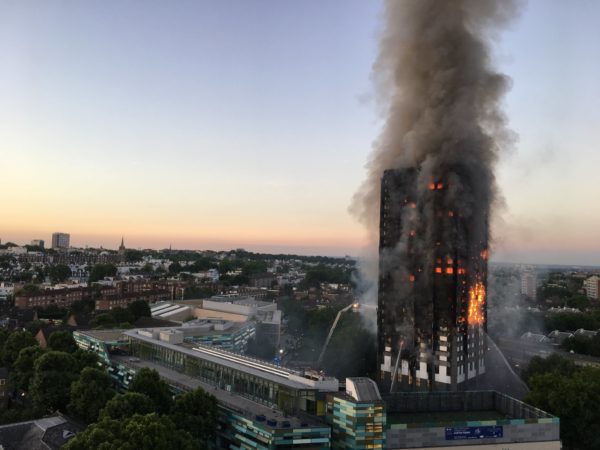
Almost 18 months after the Grenfell Tower catastrophe, the government has introduced legislation in parliament to potentially avert another tragedy.
The building regulations, which go into effect on December 21, prohibit the use of combustible materials in the exterior walls of new structures above 18 metres tall. The federal government is also assisting local governments with urgent work to remove and replace hazardous aluminium composite material (ACM) cladding.
According to preliminary findings, flammable cladding was responsible for the quick spread of the fire in the Grenfell Tower incident, which killed 72 people on June 14, 2017.
What is cladding
Cladding is a term used to describe components attached to a building’s primary structure to create a non-structural outer layer. This is in contrast to structures where the external surfaces, such as masonry walls, are formed by structural elements. Because the cladding panels will be attached to the outer walls, it is critical to know the panel’s combustibility before installing it. For instance, cladding products supplied by compositewarehouse UK are perfect for outdoor use.
ACM (Aluminium Composite Material) panels are frequently used to clad buildings, usually as a rainscreen. A rainscreen (also known as a ‘drained and ventilated’ or ‘pressure-equalised’ façade) is a component of a double-wall building. The rainscreen simply prevents massive quantities of water from leaking into the wall’s structure. It also acts as an insulator, providing airtightness and structural integrity.
ACM cladding is crafted by tightly binding two aluminum covers to either side of a lightweight core, composed of polyethylene, polyurethane, profiled metal, or a mineral core. Its smooth surface, diverse color options, lightweight design, and ease of machining have made it a highly desirable product. Yet, it’s important to note that in the event of a fire, these panels might delaminate, potentially impacting the core material, especially when considering specialized applications like metal wall cladding coating.
What is prohibited by the new building codes?
Combustible materials will not be allowed on the exterior walls of new structures exceeding 18 metres tall or those currently in the works under the ban. All newly constructed homes, clinics, assisted living facilities, boarding school dormitories, and student accommodation over 18 metres tall will be subject to new building regulations.
Certain combustible materials, such as external cladding panels, insulation, and materials in window spandrel panels and infill panels, but not window frames, have also been prohibited from being utilised in existing building renovations. The ban also extends to balconies made of combustible materials.
Other changes under the regulations
The regulation also prohibits the use of engineered wood, notably cross-laminated timber (CLT), in the external walls of structures taller than 18 metres. Architects are increasingly turning to CLT as a more environmentally friendly option for steel and concrete structural frames.
City councils are also receiving support from the government – including financial assistance if necessary – to enable them to carry out emergency work on private residential structures with dangerous ACM cladding. Building owners will be reimbursed for the costs, allowing properties to be structurally safe as soon as possible. The government is already paying for the replacement of dangerous ACM cladding on social-sector buildings that are taller than 18 metres.
The ban would not apply retroactively to buildings that have already been installed with combustible materials. Some combustible paint, carpeting, laminated glass, and seals will still be allowed because non-combustible equivalents aren’t available.
Reactions
The Royal Institute of British Architects (RIBA) applauded the legislation but wished for it to go even further. Jane Duncan, the chairperson of RIBA’s Expert Advisory Group on Fire Safety, said:
“I am pleased that the government has taken recommendations on board and broadened the cladding ban to include other high-risk buildings such as hospitals, residential accommodation and care homes. We would like to see other high-risk buildings included, such as hotels and hostels, which are specifically exempted from the legislation.”
When it comes to making sure buildings are as safe as possible, Jane thinks the government could perhaps address the RIBA’s recommendations on fire sprinklers, a lightning rod installation, alarm systems, and alternative means of escape in all residential high-rise buildings. In case of a house fire, you might need a fire damage restoration service after the fire has been controlled.
